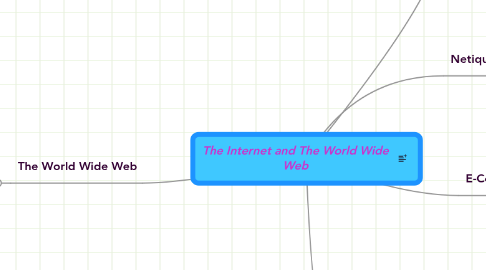
1. The Internet is a worldwide collection of networks that links millions of businesses, government agencies, educational institutions, and individuals
1.1. Evolution of the Internet : The Internet originated as ARPANET in September 1969 and had two main goals.
1.1.1. Allow scientists at different physical locations to share information and work togethe
1.1.2. Function even if part of the network were disabled or destroyed by a disaster
1.2. Each organization is responsible only for maintaining its own network
1.3. Internet2 connects more than 200 universities and 115 companies via a high-speed private network
1.4. • An IP address is a number that uniquely identifies each computer or device connected to the Internet • A domain name is the text version of an IP address – Top-level domain (TLD) • A DNS server translates the domain name into its associated IP address
2. The World Wide Web
2.1. • The World Wide Web, or Web, consists of a worldwide collection of electronic documents (Web pages) • A Web site is a collection of related Web pages and associated items • A Web server is a computer that delivers requested Web pages to your computer • Web 2.0 refers to Web sites that provide a means for users to interact
2.1.1. A home page is the first page that a Web site displays
2.1.2. Web pages provide links to other related Web pages
2.1.3. Downloading is the process of receiving information
2.1.4. Some Web pages are designed specifically for microbrowsers
2.1.5. A Web page has a unique address called a URL or Web address
2.2. Multimedia refers to any application that combines text with
2.2.1. A graphic is a digital representation of nontext information / Graphic formats include BMP, GIF, JPEG, PNG, and TIFF / A thumbnail is a small version of a larger graphic
2.2.2. Animation is the appearance of motion created by displaying a series of still images in sequence
2.2.3. Audio includes music, speech, or any other sound
2.2.4. Video consists of full-motion images that are played back at various speeds
2.2.5. Virtual reality (VR) is the use of computers to simulate a real or imagined environment that appears as a three-dimensional space
